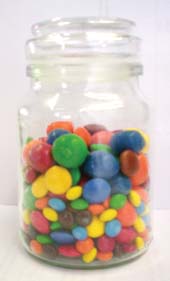from Erica Jacobsen, JCE High School Editor
If you haven’t visited it before, chemistry.com (accessed Jun 2008) probably isn’t quite what you think. The Web site does focus on chemistry—of the matchmaking kind. The online dating service uses an algorithm created by Helen E. Fisher, an anthropologist who has studied the neural chemistry of people in love (1). Users answer a few hundred questions to form a “personality profile”, which is then used to match them to users with a similar “chemistry”.
Did you know that there are matchmakers on the Journal of Chemical Education staff as well? They may not realize it themselves, but the editors that plan and lay out the Journal are experts at matching up articles with a similar chemistry (literally) in every issue. As articles accepted for publication progress through the system, each is tentatively slotted into a particular issue. Matches are made between related articles if possible, and you’ll commonly find them juxtaposed in an issue. So it’s no accident that you’ll find a collection of ideas that favor the sweet tooth in the August issue of JCE. After JCE Classroom Activity #97 “The Sweeter Side of Density” was scheduled for the August issue, other related articles popped up. Two of them are of special interest to high school teachers. You’ll find them on the pages flanking the Activity sheet.
In the Activity, students first measure the density of various sugar solutions. But then Davis and Henry give this common density lab procedure a twist—students dye the solutions and are challenged to devise a method to combine these miscible solutions to make a multi-colored, layered heterogeneous mixture. After a successful layering, they take it a few steps further by predicting the density and color that will result if they then mix the layers. While reading the preview copy of this issue, I was pleased to discover the matchmaking that JCE editors did between the Activity and the article that follows. Peterson’s article “Measuring the Density of a Sugar Solution: A General Chemistry Experiment Using a Student-Prepared Unknown” is a great extension for students that have tried the Classroom Activity. See the pointer for more details. Laura describes a third sugary article in her Take below.
You won’t find sugar in Phifer and Gmurczyk’s article. Instead they describe more matchmaking—between the U.S. Environmental Protection Agency, the American Chemical Society, and educators to help K–12 schools manage their chemical stores and to safely dispose of any unnecessary chemicals. Please find out how you can help with this important “Schools Chemical Cleanout Campaign” (SC3).
Laura’s Take on the Issue
from Laura Slocum, JCEHigh School Associate Editor
It is August already, but it just can’t be really! School starts soon for many of us, including me. I will be finalizing my first month of lesson plans while attending the Biennial Conference on Chemical Education at the end of July.
Since 1998, I always start the first day of class collecting data to help teach my students how to make data tables, analyze both individual and class data, and review their data and procedure for errors. This year I am going to use ideas that Canaes, Brancalion, Rossi, and Rath describe in their article “Using Candy Samples To Learn about Sampling Techniques and Statistical Data Evaluation”.
Because I have smaller class sizes and therefore smaller data sets, I will not go into mean-based statistical analysis as the authors do. My students use median-based statistical analysis techniques, line plots, and box plots throughout the year on all quantitative labs. Students have commented that statistical analysis was challenging at first, but that they found it rewarding as they gained a better understanding of it with practice. Ideas proposed by Canaes, et al. will give my students the opportunity to further explore data acquisition and analysis and also reward them with a bit of a treat at the end of the activity—some M&M’s to take with them, of course, never to eat in the lab!
Literature Cited
1. Tierney, J. Findings: Hitting It Off, Thanks to Algorithms of Love. The New York Times, Jan 29, 2008 (accessed Jun 2008).




* You can follow any responses to this entry through the RSS 2.0 feed.